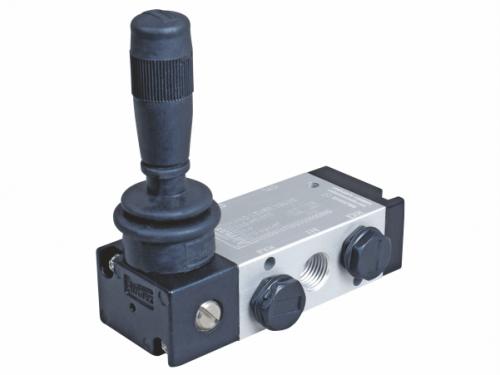A Closer Look at Hand Lever Valves: Features, Benefits, and Best Practices

Hand lever valves are essential components in various industrial applications where manual control of fluid or gas flow is required. These valves offer a simple and reliable solution for controlling the movement of fluids or gases through pipelines, hoses, or other systems. In this article, we will take a closer look at hand lever valve, exploring their features, benefits, and best practices.
Features of Hand Lever Valves
Hand lever valves are designed with specific features that make them suitable for manual control applications. Here are some common features of hand lever valves:
Manual Operation: Hand lever valves are operated manually, allowing operators to have direct control over the flow of fluids or gases. The lever mechanism provides a simple and intuitive way to regulate the valve's position and, consequently, the flow rate.
Lever Position: Hand lever valves usually have two or three positions, including an "on" position, an "off" position, and sometimes a middle or intermediate position for partial flow control. The positions can be clearly indicated on the valve body or handle for easy identification.
Port Configurations: Hand lever valves come in different port configurations to accommodate specific system requirements. Common configurations include two-way (2/2) valves with one input and one output port, three-way (3/2) valves with one input and two output ports and four-way (4/2 or 4/3) valves with two input and two or three output ports.
Flow Control: Hand lever valves allow precise flow control by adjusting the lever position. Depending on the valve design, the lever can be moved to different angles or positions, enabling operators to regulate the flow rate as needed.
Benefits of Hand Lever Valves
Hand lever valves offer several benefits that make them the preferred choice in various industries. Here are some key advantages of using hand lever valves:
Reliability: Hand lever valves are known for their robust construction and long-lasting performance. They are designed to withstand harsh operating conditions, including high pressures and temperatures, without compromising their functionality. Their mechanical simplicity reduces the risk of failure, making them reliable components in critical applications.
Manual Control: The manual operation of hand lever valves provides operators with direct control over the flow, allowing for quick adjustments and immediate response to changing process conditions. This level of control is especially beneficial in applications where precise flow regulation is required.
Cost-Effective: Hand lever valves are typically more affordable compared to automated valves, making them a cost-effective solution for applications that do not require a continuous or remote operation. They eliminate the need for complex control systems and can be easily installed and maintained, reducing overall costs.
Versatility: Hand lever valves can be used in a wide range of industries and applications, including manufacturing, processing, oil and gas, agriculture, and more. Their versatility stems from the fact that they can handle various fluids, gases, and pressures, making them adaptable to different system requirements.
Best Practices for Hand Lever Valve Usage
To ensure optimal performance and longevity of hand lever valves, it is important to follow some best practices:
Proper Installation: Follow the manufacturer's guidelines for correct installation, including ensuring proper alignment and adequate sealing. Improper installation can result in leakage or reduced valve performance.
Regular Maintenance: Perform routine inspections and maintenance to check for wear and tear, lubricate moving parts if necessary, and address any issues promptly. This will help extend the lifespan of the valves and maintain their reliability.
Training and Safety: Provide proper training to operators on the correct operation and handling of hand lever valves. Emphasize safety precautions, such as wearing protective gear and using appropriate tools when working with valves.
Compatibility: Ensure that the selected hand lever valve is compatible with the fluid or gas being controlled, as well as the system's pressure and temperature requirements. Using an incompatible valve can lead to performance issues or even equipment damage.
Conclusion
Hand lever valves offer a manual and reliable solution for controlling fluid or gas flow in various industrial applications. With their robust construction, cost-effectiveness, and versatility, hand lever valves continue to be widely used in different industries. By following best practices in installation, maintenance, and operation, users can maximize the benefits of hand lever valves and ensure their optimal performance in the long run.
Post Your Ad Here

Comments